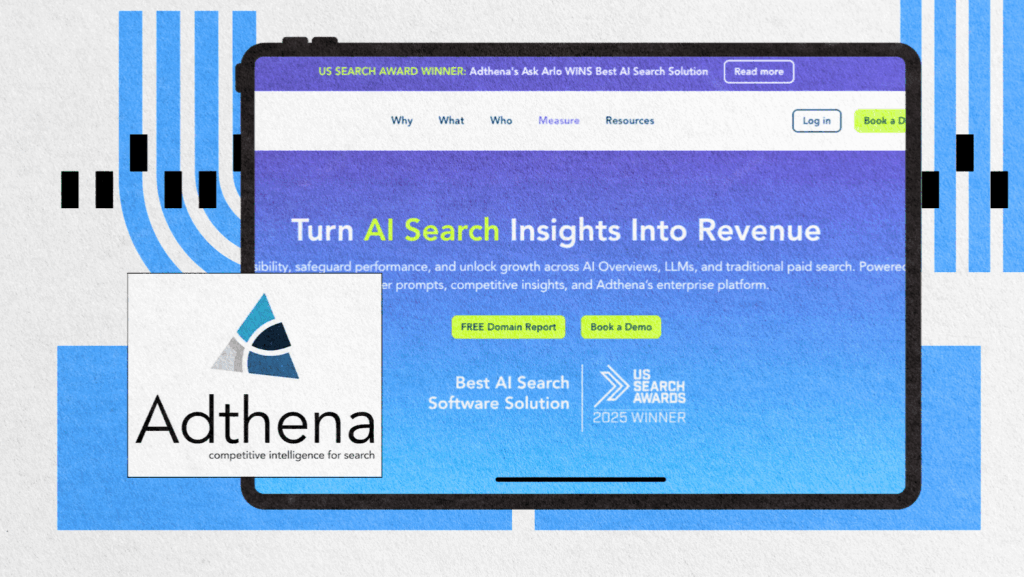AI-generated content is booming – from blog posts to social captions—but let’s face it, it doesn’t always sound human. That’s where the best AI humanizer tools step in.
In 2025, creators face a double challenge: crafting content that actually connects with readers and passes through AI detectors. Many platforms now flag content that doesn’t feel “written by a human,” which can hurt engagement, SEO, and credibility.
So, what is an AI humanizer? It’s an AI tool that takes AI-generated text and makes it more natural, emotional, and authentic. The goal? To humanize AI text so it resonates with your audience and, in some cases, becomes undetectable to standard AI detection tools.
Quick note: this isn’t about tricking the system. It’s about improving quality. Use humanizers to boost clarity, not mislead.
Ready to find the best AI humanizer for your content? Let’s dive into the top tools for 2025.
What is an AI Humanizer? (And Why You Need One)

An AI humanizer is a smart AI tool designed to turn robotic-sounding AI-generated text into more natural language that reads like a human wrote it. Think of it as your content’s translator – taking stiff, mechanical phrases and turning them into smooth, conversational copy.
But it’s not just about sounding better.
Using an AI humanizer has some major benefits:
- It makes your content more readable and trustworthy.
- It improves SEO performance by keeping readers engaged longer.
- And maybe most importantly? It helps you bypass AI detectors like GPTZero, Winston AI, and Turnitin—tools that flag content that sounds too machine-made.
So, who’s this really for? Honestly, anyone using AI-generated content who wants it to sound like a human actually wrote it.
- If you’re a student, these tools help clean up stiff, robotic drafts so your work feels more natural – and yes, might even help you bypass AI detection tools like Turnitin (just don’t get wild with it, okay?).
- For bloggers and content marketers, it’s all about connection. Humanized content keeps readers on the page longer and boosts your chances of ranking on Google.
- Business professionals? You’re busy. These tools can polish up reports, emails, or LinkedIn posts without making you sound like ChatGPT wrote your entire brand voice.
- If you’re a non-native English speaker, AI humanizers are like personal editors, helping you write smoother, clearer content in natural language, sometimes even across multiple languages.
- Freelancers and ghostwriters can also greatly benefit from this. Use AI to speed things up, then humanize it so clients never question who really wrote it.
- Even affiliate marketers and social media managers are jumping on board—because bland, robotic copy just doesn’t cut it in a scroll-happy world.
So whether you’re using a free AI text humanizer or investing in something premium, these tools are low-key becoming essential to bypass AI detectors and actually connect with people.
Key Features to Look for in an AI Humanizer
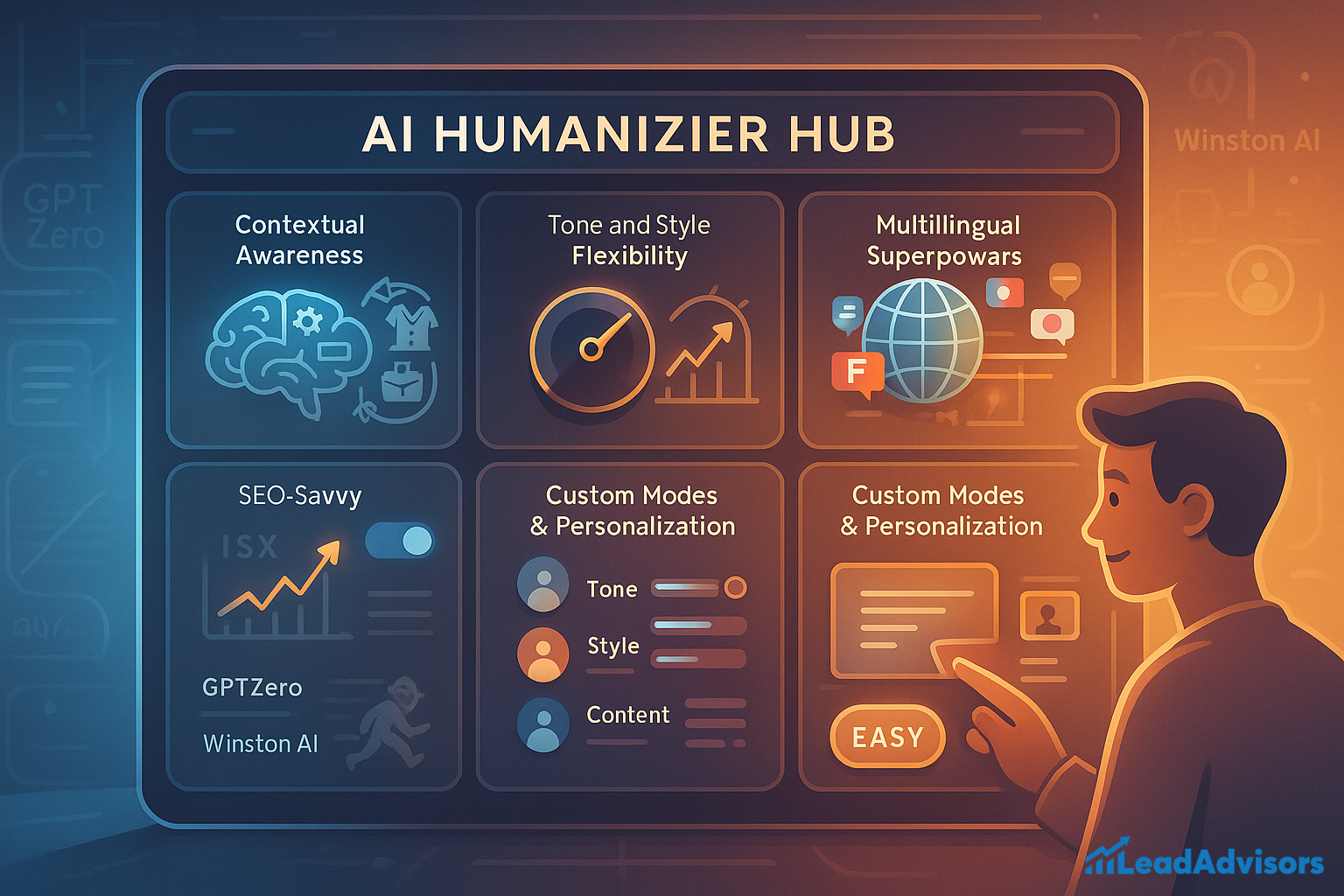
Okay, so you’ve decided to try an AI humanizer – great move. But with so many tools out there, how do you know which ones are actually worth your time?
Here’s what to look for if you want to transform AI-generated text into something truly human-like:
1. Contextual Awareness
You don’t want a tool that just swaps out words with synonyms. A good humanizer understands what you’re writing about. Whether you’re covering fashion, finance, or food trucks, it should adapt the tone and vocabulary to match the vibe.
2. Tone and Style Flexibility
One minute, you need a casual tone for a blog, and the next, it’s a buttoned-up business report. The best tools let you shift from fun and friendly to sharp and professional without breaking a sweat.
3. SEO-Savvy
Just because your content sounds more human doesn’t mean you want to lose your SEO edge. Look for a tool that keeps your keywords in play while still improving flow. It’s like giving your AI content a glow-up without losing its searchability.
4. Multilingual Superpowers
If your brand speaks to a global audience, this one’s key. Tools that support multiple languages help you sound human and local, wherever your readers are.
5. Built-In AI Detector Evasion
Yep, this one’s a biggie. The top tools are designed to bypass AI detection – they know how to pass AI detection tests from platforms like GPTZero and Winston AI. If your goal is to fly under the radar, make sure your humanizer has your back.
6. Custom Modes & Personalization
You want control. Whether it’s adjusting the tone, choosing a writing purpose, or selecting different output styles, flexibility is everything. Some tools even have templates for emails, essays, blogs – you name it.
7. Zero Tech Headaches
Let’s be honest—nobody wants to deal with complicated dashboards. The best humanizers are super easy to use. Paste in your AI-generated text, hit a button, and boom – human-like magic.
How We Tested These AI Humanizers
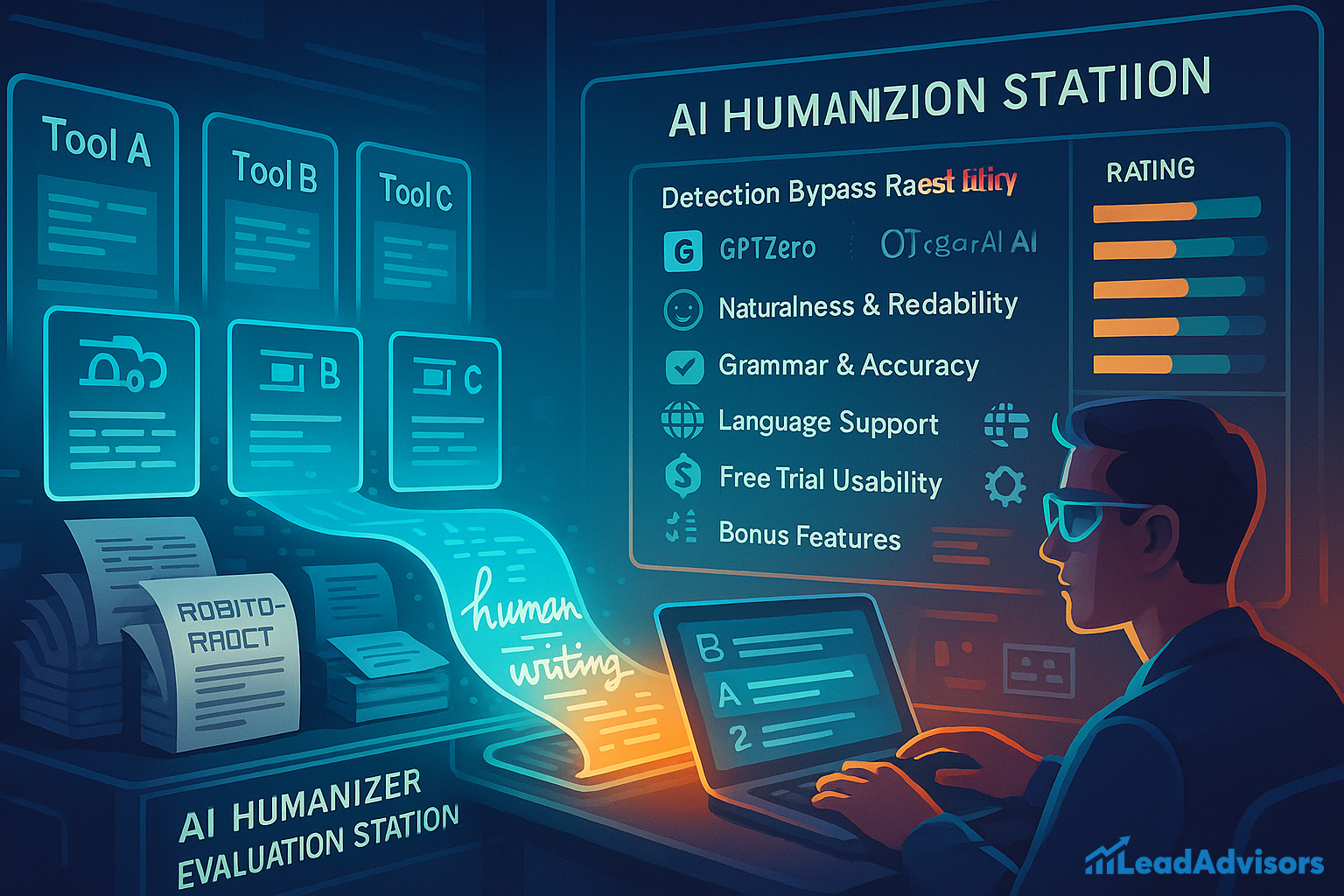
Now, before we hand you a list of the best tools out there, here’s a quick peek behind the scenes at how we actually tested each AI humanizer.
We started by creating a set of technical, dry AI-generated content – the kind that usually screams, “Robot wrote this.” Then, we ran each sample through different AI humanizer tools to see how well they could convert AI-generated text into something that sounds, well, human.
But we didn’t stop there. We wanted to make sure these tools actually work in the real world, so we ran each humanized version through 4–5 popular AI detectors:
- GPTZero
- Winston AI
- Originality AI
- Sapling AI
We didn’t just guess which tools were the best – we actually tested them. Here’s how we graded each AI humanizer tool, using technical AI-generated content and running the outputs through several top AI detectors.
| Criteria | What We Looked For |
| Detection Bypass Rates | Did the tool help the content pass AI detection (GPTZero, Winston AI, etc.)? |
| Naturalness & Readability | Did it sound like a human, not a bot, wrote it? |
| Grammar & Accuracy | Was the final text clean, error-free, and easy to read? |
| Language Support | Could it handle multiple languages, or was it limited to just English? |
| Free Trial Usability | Was there a free AI tool version that worked well without forcing a paid plan? |
| Bonus Features | Tools received extra points for tone customization, writing modes, or purpose-specific tweaks (e.g., formal vs. casual). |
Bottom line: this wasn’t just a quick skim. We gave each tool a legit test to see how well it could convert AI-generated text into something engaging, accurate, and genuinely human-like.
Top AI Humanizer Tools of 2025 (Ranked + Reviewed)
Not all AI humanizers are created equal – some barely tweak your text, while others make it sound like a real person poured their heart into it. So, we did the digging for you. We tested, reviewed, and ranked the best AI humanizer tools of 2025 to see which ones truly deliver.
Whether you’re writing blog posts, emails, or captions that need to pass AI detection systems without sounding robotic, these tools will help you humanize your content without the headache. Ready to find your new favorite? Let’s jump in.
1. StealthGPT — Best Overall for Human-like Output
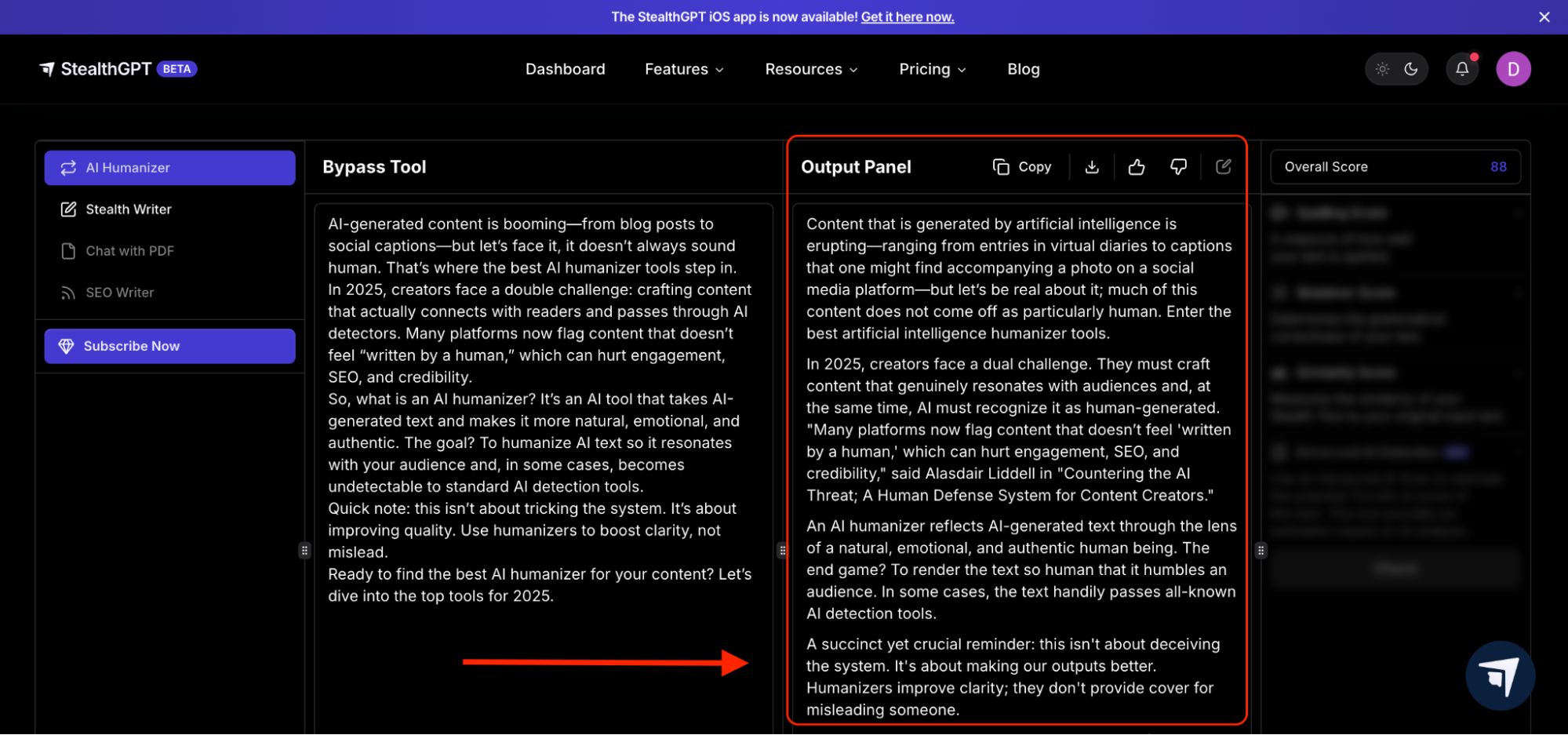
If you’re serious about humanizing AI in 2025, StealthGPT is the gold standard.
This tool absolutely nailed it in our tests, clocking in a 100% pass rate across multiple AI detection systems, including GPTZero, Winston AI, and Originality AI. That’s not easy to pull off – and it makes StealthGPT a go-to choice for students, marketers, and anyone creating sensitive or SEO-critical AI content.
StealthGPT uses advanced algorithms to go beyond basic paraphrasing. It rewrites content in a way that flows naturally, maintains clarity, and actually sounds like a real person wrote it. Whether you’re working on blog posts, social media posts, emails, or creative writing, the results are surprisingly smooth.
And get this – it supports over 100 languages, making it ideal for global brands managing content creation across markets. The dashboard is clean, fast, and super intuitive, so you won’t feel like you need a tech degree to get started.
What we loved:
- Spot-on tone and phrasing
- Great at preserving original meaning
- AI detection bypass was consistently effective.
- Works well for SEO and search engine content
Free trial? Yep! You get 350 words per reset to test it out without paying upfront.
Bottom line: If you’re looking for the best overall AI humanizer to help you detect AI-proof your work and make your content feel genuinely human, StealthGPT is your best bet.
2. WriteHuman — Best for Emotional, Humanized Tone
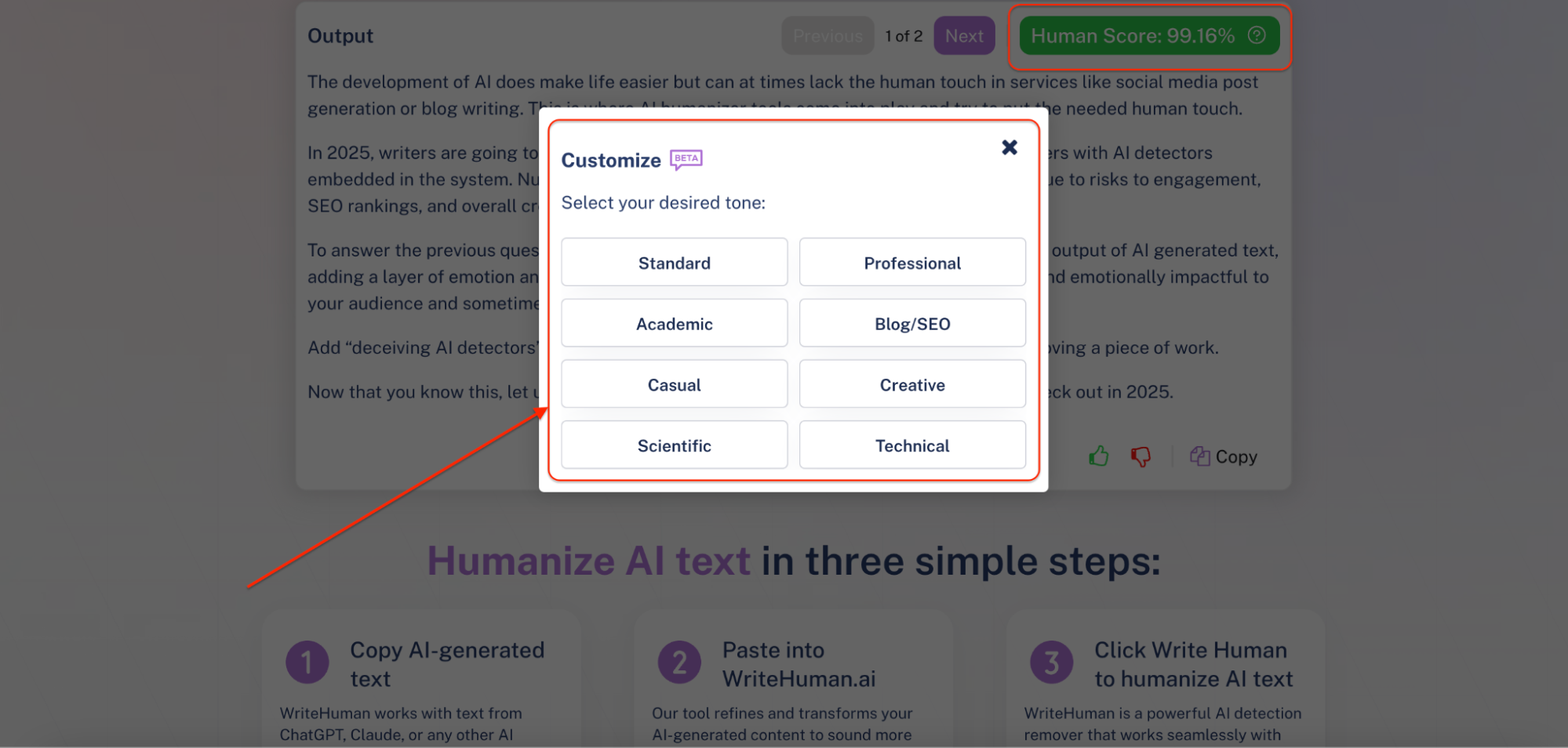
If your content needs a bit more soul, WriteHuman is your go-to. This tool stands out for its ability to give AI-generated content an emotional, human edge – perfect for storytelling, brand messaging, and blog writing that actually feels relatable.
One of the coolest features is that it offers eight tone options, including casual, academic, and SEO/blog-specific modes. That flexibility means you can fine-tune your message for your audience while keeping your content creation process efficient and true to your voice.
During testing, WriteHuman passed every AI detection system we threw at it, from GPTZero to Winston AI. While the output occasionally felt slightly robotic in longer pieces, it was still a strong performer with clear readability and flow.
What we liked:
- Great emotional tone for blogs and personal pieces
- Effective at making AI feel more human
- Reliable AI detection bypass results
- Easy tone customization for different writing styles
Free trial? Limited version available to test key features.
Bottom line: If your goal is to convert AI-generated text into something with a heartbeat – and you love the idea of tailoring tone – WriteHuman is a solid pick.
3. Humanize AI — Best for Versatility
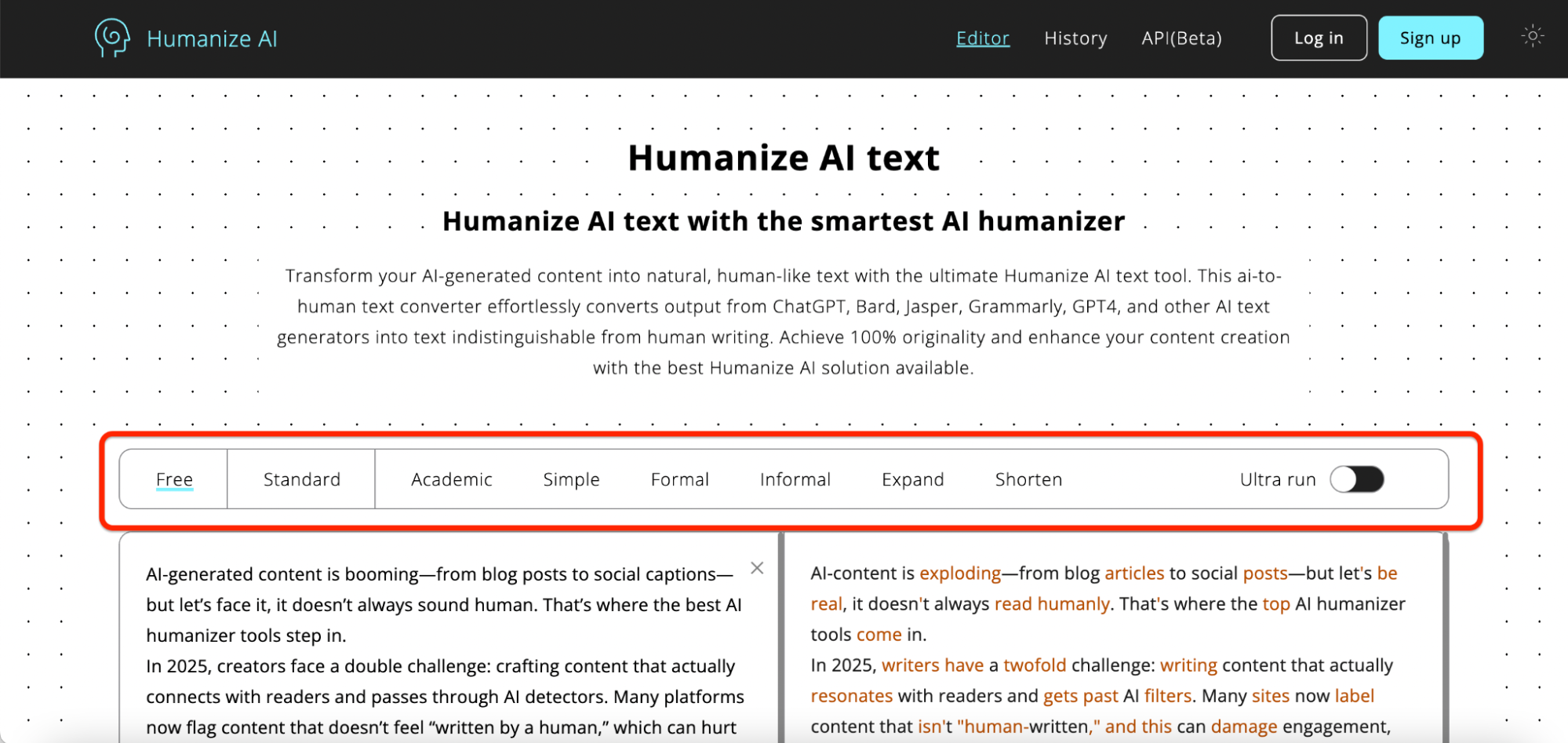
If you’re looking for a free AI humanizer that offers tons of flexibility, Humanize AI is a standout. It’s built to help you create human-like content in different styles – whether you’re writing a research paper, a formal email, or a laid-back blog post.
It comes in multiple modes, such as academic, formal, informal, and simple, so you can easily match your brand voice or writing purpose. One feature we loved? The Ultra Run mode, which is explicitly designed for users who want to slip past AI detection systems as stealthily as possible. Think of it as your content’s invisibility cloak.
For transparency lovers, the tool also highlights edits so you can see exactly what’s changed. That’s a nice bonus for anyone who still wants to keep that human touch in check.
What we liked:
- Super versatile tone and writing options
- Clean and readable human-like text output
- Great for making your AI-generated content sound like a real person wrote it
- Helpful daily word limit for testing the tool (great for quick tasks!)
Free version? Yep – there’s a daily cap, but it’s perfect for quick projects or light users.
Humanize AI is a powerful pick if you’re juggling multiple types of writing and want human-written results that still feel true to your voice. Whether you need subtle edits or a full-on AI detection remover, this tool has you covered.
4. Humanize AI Text — Best for Personalization

If you’re after a tool that really gets you, Humanize AI Text brings something special to the table: persona-based writing goals. Whether you’re a marketer refining your brand voice, a student crafting an essay, or a creator working on human-like content, this tool adjusts its tone based on who you are and what you’re trying to say.
It’s also multilingual, making it ideal for global teams who want to create human-like content that feels just as natural in Spanish, French, or Tagalog as it does in English.
What really sets this tool apart is its ability to help your content sound consistent across platforms. It’s excellent for brand-building and perfect for anyone who needs copy that aligns with a specific identity or purpose.
What we liked:
- Personalization that adapts to your role or writing goal
- Strong performance for brand-consistent content creation
- Delivers human-like text without losing structure or clarity
- Supports multiple languages for broader audience reach
Free version? Limited functionality, but enough to test its personalization tools.
If you want your AI-generated content to feel more personal, on-brand, and – let’s be honest – less robotic, Humanize AI Text is a solid option that gives your words that much-needed human touch.
5. Quillbot — Best for Simplifying Complex Writing
Need to turn dense, technical writing into something that actually makes sense? Quillbot is your go-to tool. Known for its powerful paraphrasing abilities, it’s especially great at helping users humanize AI content and break down complicated ideas into clear, high-quality content that’s easy to read.
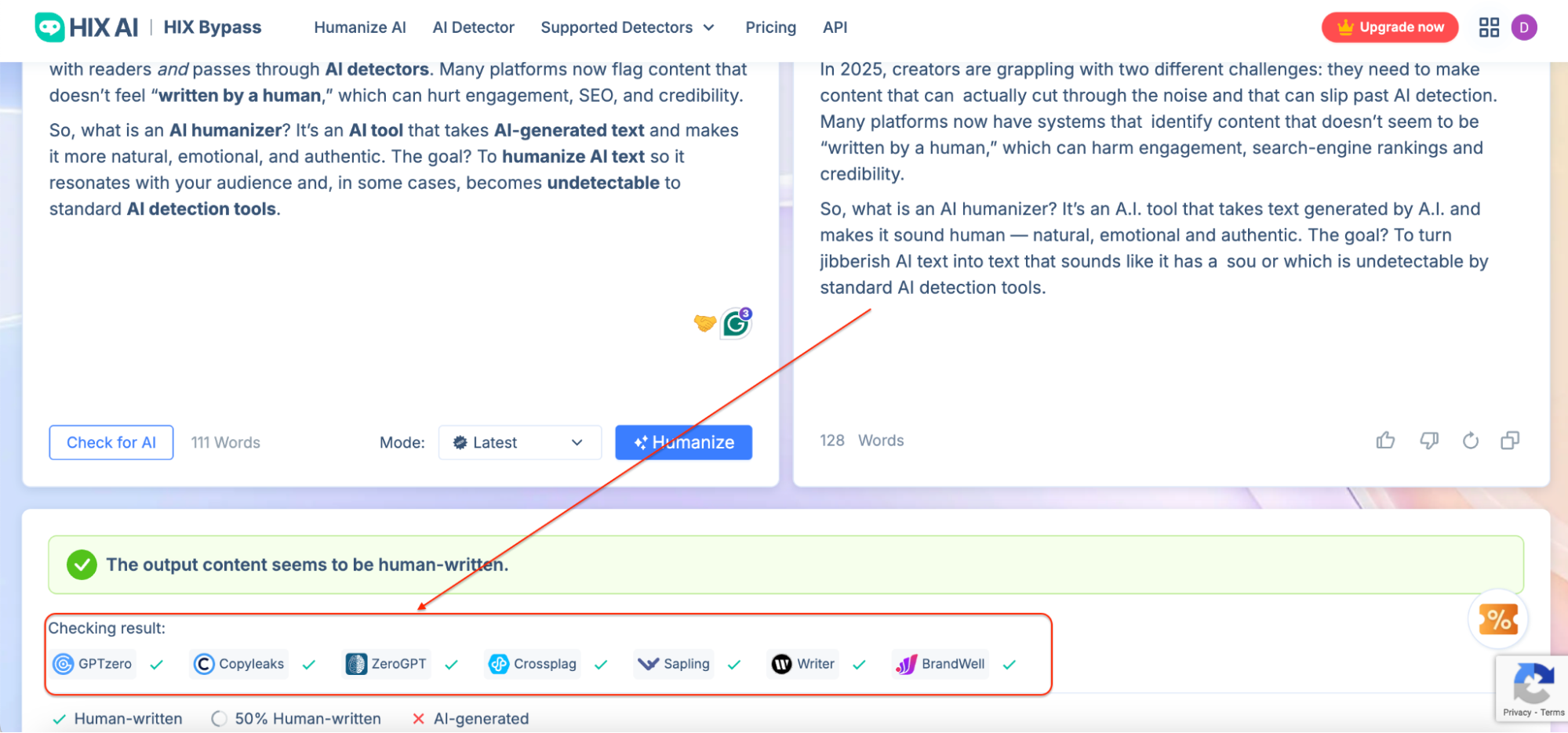
While it doesn’t market itself strictly as an AI humanizer, Quillbot shines when you want to clean up robotic tone, improve flow, or make content sound casual and more approachable, especially in marketing materials, emails, or product descriptions.
The SEO-friendly adjustments also help if you’re working on content that needs to rank but still feels natural to your audience. Plus, it has solid multilingual support, making it handy for global users.
What we liked:
- Excellent at rewriting and simplifying humanized content
- Helpful for technical documents and formal writing
- Keeps things readable and natural with minimal effort
- Great entry point for anyone just starting to AI-humanize their work
Free version? Yes, but with limited features like fewer writing modes and slower processing.
If you prioritize clarity and readability over tone customization, Quillbot is a smart, straightforward pick that will help you produce human-like, high-quality content without feeling overwhelmed.
6. Undetectable AI — Best for Large Documents

Working with hefty blog posts, research papers, or long reports? Undetectable AI is built for just that. With a generous 15,000-character limit, it’s one of the few tools to handle large-scale AI-generated content without cutting you off mid-sentence.
True to its name, this tool focuses on helping you bypass AI detection by running your content through top AI detection systems like GPTZero, Originality AI, and Winston AI. It does a solid job of producing humanized content that’s structured and readable, though you might still want to give it a final once-over to really make your writing shine.

What we liked:
- Ideal for long-form documents
- Targets AI detection bypass as its core feature.
- Scans output against real-time detectors
- Great option for researchers, writers, or content marketers handling volume
Free trial? Yes, it has limited characters, but it is great for testing long-form capability.
If you’re dealing with lengthy AI-generated text and want a tool that prioritizes undetectability over style, Undetectable AI is a dependable pick, as long as you’re okay with a bit of manual polishing to give it that final human touch.
7. Hix Bypass — Best for Aggressive Humanization
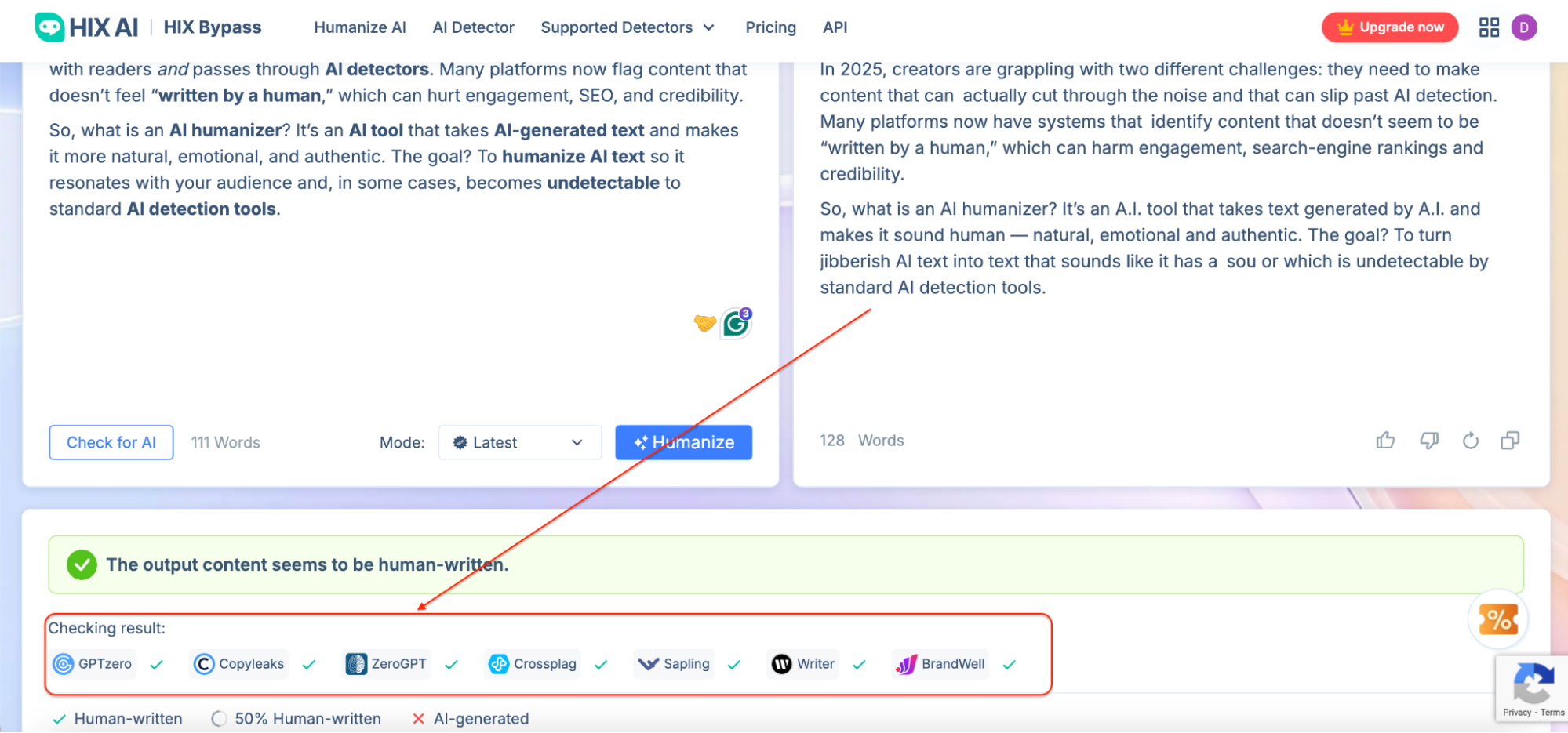
Hix Bypass brings the heat – especially if you’re looking for intense rewriting that goes beyond surface-level edits.
It offers four rewriting modes – fast, balanced, aggressive, and latest – giving you plenty of control over how deeply it rewrites your content. The aggressive mode is handy for high-risk use cases like academic writing or publishing on platforms with strict AI detection rules.
Just note: while aggressive edits often pass detection with ease, they can sometimes introduce minor typos or oversimplify phrases.
What’s cool is that it doesn’t just rewrite – it strikes a balance between bypassing detectors and keeping your content readable and natural. You get a decent free version with limited characters, and if you need more, the paid version unlocks unlimited access and extra features.
What we liked:
- Strong results for human-like writing
- Flexible rewrite options based on your content goals
- Perfect for sensitive or high-stakes content
- Works well even on challenging topics like technical or academic writing
Free plan? Yes, with access to basic features and character caps.
If you’re looking for a tool that doesn’t play it safe – and you’re okay doing a quick grammar check after – Hix Bypass delivers bold, humanized results that go the extra mile to escape AI detection.
8. BypassGPT — Best for Basic Edits and Readability
If you’re just starting with AI humanizer tools and need something simple that gets the job done, BypassGPT is a solid choice. It may not be the strongest when it comes to complete AI detection bypass, but it definitely helps polish machine-generated text and boost overall readability.
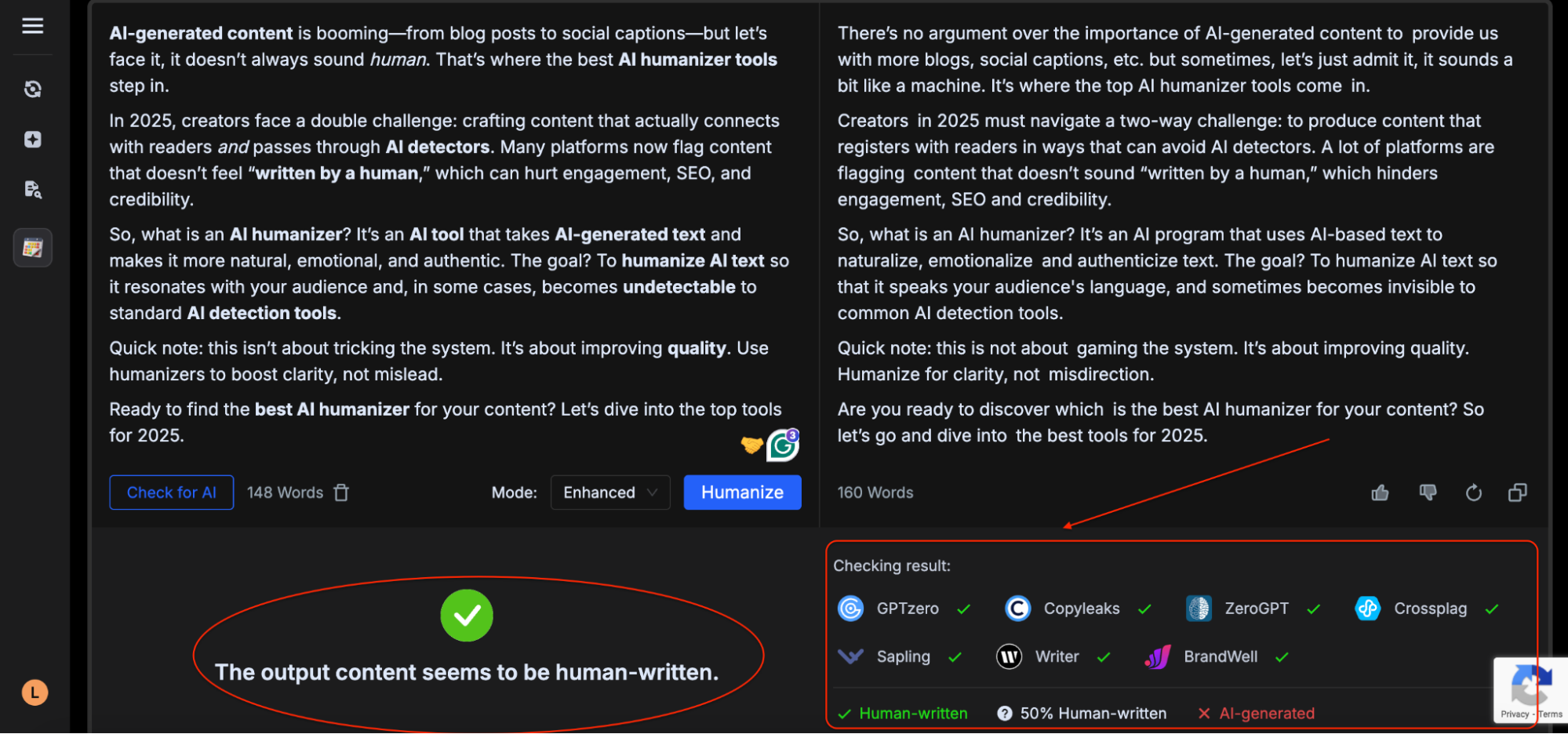
You can access multiple modes, which are great for tweaking tone or flow depending on your content goals. Whether you’re editing blog drafts or cleaning up AI-written email copy, BypassGPT helps give your words a smoother, more human-like rhythm without making drastic changes.
It’s also one of the more generous tools when it comes to free use, offering daily bonus words that make it a decent free version option for light users or small projects.
What we liked:
- Super easy to use
- Improves flow and tone for casual readers
- Helpful for quick edits or light content creation needs
- Great intro tool for beginners
Free plan? Yes, with daily word bonuses, no strings are attached.
If you want to improve the readability of your AI-generated content without diving into advanced features, BypassGPT is an accessible, low-effort tool that keeps things smooth and simple.
9. AI Humanizer by Ask Your PDF — Best for Multiple Output Options
Looking for variety in your humanized text? AI Humanizer by Ask Your PDF gives you not just one, but five variations every time you run your content through it. That’s a win if you’re someone who likes options and wants to compare tones, styles, or levels of detail before picking the final version.
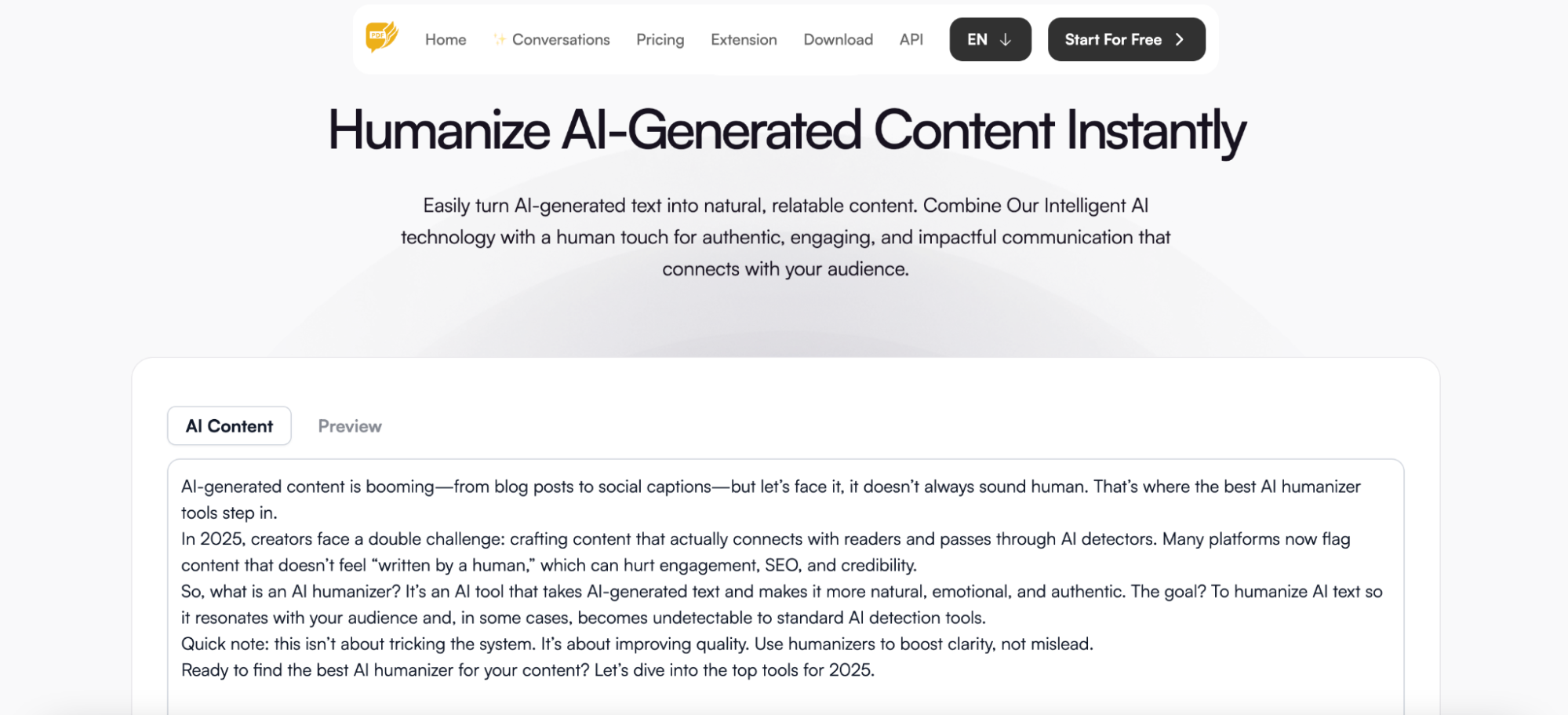
This tool is a solid pick for general writing, from blogs and summaries to academic paragraphs. While it’s not 100% plug-and-play (you’ll likely need to do some light editing), it helps your AI-generated content sound natural, carry an emotional tone, and keep the original meaning intact. It’s beneficial if you’re after engaging text that actually feels like it came from a real person.
What we liked:
- Multiple outputs per pass = more creative control
- Maintains clarity while improving tone and natural flow
- Helpful for both casual and academic writing
- Can be paired with a plagiarism checker for an added layer of quality
Heads-up: Some outputs may contain minor grammatical errors, so manual polishing is recommended.
Bottom line: If flexibility is your thing, AI Humanizer by Ask Your PDF is a game changer – especially for writers who want to fine-tune content and choose the most human content version that fits their voice.
10. AI Humanize — Best for Analytical Metrics
If you’re a data-driven writer who loves digging into the why behind what works, AI Humanize offers a unique spin on the typical AI humanizer tool experience. What sets it apart? Its built-in text analysis features—like perplexity and length variation—which help you evaluate just how “human” your content really feels.

It’s perfect for anyone who wants to go beyond just surface edits and truly understand how to make their AI-generated content more natural and human-like. It gives you real-time technical feedback that can help guide your tweaks and refine your voice over time.
That said, while it excels in analytical metrics, the tool occasionally misses the mark with grammar, so it’s best used alongside a proofreading pass or grammar tool.
What we liked:
- In-depth analysis for a better understanding of humanized text
- Great for refining tone and improving flow scientifically
- Ideal for testing content before running it through AI detection tools
- Adds value to general writing and editing workflows
Free version? Yes, with access to its core analysis features.
However, it may need a little help with grammar, but it’s a great tool to help your AI content evolve from mechanical to masterful.
AI Humanizers That Failed to Impress (Quick Mention)
Not every tool made the cut. While we tested a wide range of AI humanizer tools, a few didn’t quite deliver – either in quality, usability, or effectiveness.
Tools like Phrasly, SemiHuman, Ryne AI, and Smodin showed promising features on the surface, but fell short in actual performance. Common issues included:
- Frequent grammatical errors made the content harder to trust.
- Failed AI detection tests across multiple platforms.
- Output that sounded too robotic – or worse, completely unreadable.
While these tools may work for super basic edits or short snippets, we wouldn’t recommend them if your goal is to produce polished, human-like content that passes as being written by a real person.
Pro Tips for Using AI Humanizers Effectively

AI humanizers are powerful tools – but they’re not magic wands. To truly make your AI-generated content feel authentic, you still need a dash of your creativity. Here’s how to get the most out of any AI humanizer tool:
1. Don’t Skip the Final Touch
After running your content through a humanizer, always take a moment to review and lightly edit manually. No tool fully understands your tone, audience, or message the way you do. Catch any off-phrasing, fix formatting hiccups, and add that last bit of polish to make it shine.
2. Add a Bit of You
Want your humanized text to stand out? Drop in a personal story, a quick example, or even a casual observation. These small touches instantly humanize your AI content and help readers connect with your voice. Remember – people relate to people, not just paragraphs.
3. Shake Up the Structure
AI tends to default to a predictable rhythm. To avoid sounding stiff or robotic, vary your sentence lengths. Throw in a short, punchy sentence. Then follow it with something a little longer, maybe more reflective. Even changing up paragraph size helps keep the reader’s eyes moving.
4. Sound Like You Talk
Whenever it fits, lean into contractions and relaxed transitions. Say “you’re” instead of “you are.” Use phrases like “Here’s the deal” or “Let’s be honest,” instead of overly formal connectors like “Moreover” or “In addition.” This is key to giving your content an easy, human-like writing tone.
5. Double-Check with Detectors
Before hitting publish, take one final step: run your content through multiple AI detection tools (like GPTZero, Originality.ai, or Winston AI). It’s a great way to make sure your final draft passes as human-written and gives you peace of mind if you’re aiming to avoid flags on academic or publishing platforms.
Just remember: AI can help you write faster, but you make the writing feel real. Humanizers give you a solid head start, but your voice, perspective, and polish are what bring it all together.
Ethical Considerations When Humanizing AI Content
As AI tools become more accessible, it’s easy to forget that with convenience comes responsibility. The purpose of an AI humanizer tool isn’t to trick professors, clients, or readers – it’s to help you communicate more clearly, not to fake your expertise.
The Slippery Slope of AI Misuse
Here’s a real-world example that paints a clear picture. During a recent academic term, a professor with over 40 years of teaching experience noticed something unusual: every single student submitted term papers in flawless English. No grammatical errors, no awkward phrasing – just perfectly polished prose.

Sounds great, right? Well, not quite.
When he followed up with questions like “What did you mean by product differentiation on page 10?” or “What evidence supports your recommendation to expand in China?” Many students couldn’t explain their arguments. That’s when it became clear: the students had used AI tools – possibly humanizers – to write content they didn’t actually understand.
While the humanized text was impressive on the surface, it exposed a deeper issue. The students bypassed the learning process entirely.
This case isn’t just about grammar. It’s about integrity. If you’re using AI to sound smart without actually being informed, you’re robbing yourself of the opportunity to grow.
Be Transparent Where It Matters
Transparency matters in settings like academia, journalism, or corporate reporting. If AI assisted your writing, say so.
That doesn’t make your work less valuable – it makes it honest. Some tools even work well as part of the drafting process, as long as you bring your ideas, evidence, and critical thinking to the table.
Make Content Better—Not Misleading
AI tools are best used to enhance readability, fix tone, or help non-native speakers find their voice. When you humanize AI content, the goal should be content quality, not deception. You still need to understand, stand by, and be able to explain what you’re putting out into the world.
AI can be a fantastic support system – but only if we use it with integrity. Let it help you write, not replace your ability to think.
More FAQs About AI Humanizer Tools
Can AI humanizer tools help with non-English content?
Is it safe to upload sensitive content to AI humanizer tools?
Do AI humanizers work well with creative writing or storytelling?
Will using an AI humanizer affect my SEO?
How long does it take to humanize AI content?
Final Verdict: Which AI Humanizer is Right for You?
There’s no one-size-fits-all answer when it comes to AI humanizer tools—your perfect match depends on your goals. Whether you’re writing blog posts, academic papers, or emails that need to pass AI detection systems, here’s a quick look at which tool suits which use case best:
| Tool | Best For | Standout Feature | Free Plan? |
| StealthGPT | Overall performance | High pass rate on AI detectors + 100+ languages | 350 words/reset |
| WriteHuman | Emotional tone + branding | 8 tone presets for blogs and storytelling | Limited trial |
| Humanize AI | Versatility across writing styles | Ultra Run mode + edit transparency | Daily word limit |
| Humanize AI Text | Personalized tone & brand voice | Persona-based writing goals | Basic access |
| Quillbot | Simplifying technical or dense content | Strong paraphrasing with SEO-friendly edits | Free version |
| Undetectable AI | Long-form documents | 15,000-character limit + detector-tested output | Limited trial |
| Hix Bypass | Aggressive rewriting + AI evasion | Four rewrite modes for max stealth | Basic features |
| BypassGPT | Light edits + readability | Simple interface with bonus daily words | Daily bonus words |
| AI Humanizer (AskYourPDF) | Multi-output comparison | Generates 5 versions per input | Free access |
| AI Humanize | Analytical improvement | Perplexity + length variation metrics | Free analysis |
Need a tool that gives you fast, polished results? Go with StealthGPT. Want something that helps you sound more like you? Try Humanize AI Text or WriteHuman. Working with long documents? Undetectable AI is your friend.
Whatever your workflow, there’s an AI humanizer tool that can help you create smoother, more intelligent, and more human-like content without losing your voice.







